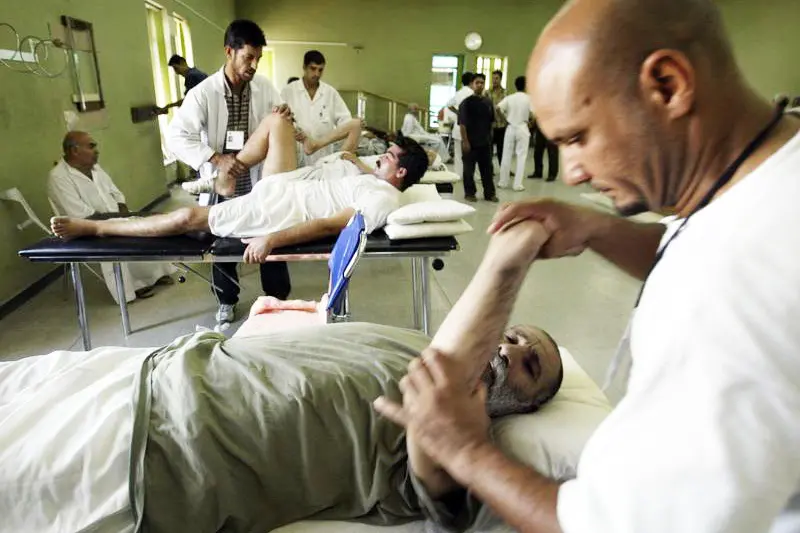PHOTO
By Shereen Lehman
(Reuters Health) – A web-based program of exercise and coping skills training improves both function and pain in arthritic knees, a new study suggests.
This kind of online therapy can greatly improve access to effective, nonsurgical and non-drug relief for people with osteoarthritis of the knee, researchers say.
“Osteoarthritis is a leading cause of chronic knee pain and disability globally,” lead author Kim Bennell, a researcher and physiotherapist at the University of Melbourne in Australia, told Reuters Health.
“It has a significant individual, societal and economic burden and on an individual level knee osteoarthritis causes loss of function, reduced quality of life, and psychological distress,” Bennell said by email.
Exercise is known as the gold standard of conservative management for knee osteoarthritis, she added. Psychological treatments, in particular, pain coping skills training that teaches people strategies to manage and cope with their painful symptoms have also been identified as important and effective, Bennell said.
“Sadly, such effective treatments are highly underutilized in the management of osteoarthritis. One reason for this relates to the challenges of accessing a specialist who delivers these services particularly for people living in rural areas where services may be limited or non-existent or due to the mobility issues that are experienced by people suffering chronic knee pain,” she said.
For the study published in the Annals of Internal Medicine, Bennell and her colleagues enrolled 148 men and women over age 50 with internet access and knee pain on most days of the week over the previous three months.
Participants were randomly assigned to a treatment group or a control group, both of which received web-based educational material about exercise and pain management for arthritis.
The treatment group also got access to an online program called PainCOACH and were asked to complete one 35- to 45-minute module each week over the course of eight weeks and to practice the pain-coping skills they learned daily. The interactive program included training in relaxation, problem solving, using pleasant imagery and changing negative thoughts to cope with pain.
In addition, the treatment group had seven Skype sessions with a physical therapist, each lasting 30 or 45 minutes, over 12 weeks. After evaluating each patient, the therapist taught them exercises for lower-leg strengthening and prescribed a regimen to do three times a week.
At the beginning of the study, then three and nine months later, participants completed multiple questionnaires scoring their pain levels and functioning.
At the three-month mark, those who got the online coping skills and exercise training had significantly lower scores for pain, functioning and distress than when they started and compared to the people in the control group. This difference between the groups remained at nine months, though the gap closed somewhat.
“The important takeaway message from these findings is that an internet-delivered intervention that adopts a holistic approach to the management of chronic knee pain and knee osteoarthritis, using freely available computer software, is effective and well received by its users,” Bennell said.
“These results are encouraging and show that ‘telemedicine’ is clearly ready for prime time,” writes Dr. Lisa Mandl, a rheumatologist at the Hospital for Special Surgery in New York, in an accompanying editorial.
“The real added benefit here is that patients do not have to come in for an appointment. They can access high-quality exercise and coping skills therapy, that is particularly tailored to them, at a place and time which is convenient,” Mandl told Reuters Health by email.
Patients may also feel more comfortable asking questions of their therapist when they are asking them from the comfort and privacy of their own home, she added.
“They may also be more motivated to follow the programs, knowing that they will receive a personalized follow-up call at home, and cannot avoid talking to the therapist by missing appointment,” Mandl said.
Mandl thinks this type of intervention would apply to most people, especially patients who live in rural areas or places without easy access to therapists. “The fact that the therapist could be located anywhere is especially helpful for patients who may not speak English,” she noted.
SOURCE: http://bit.ly/2ltYHtz and http://bit.ly/2l86Piz Annals of Internal Medicine, online February 21, 2017.
© Reuters News 2017












